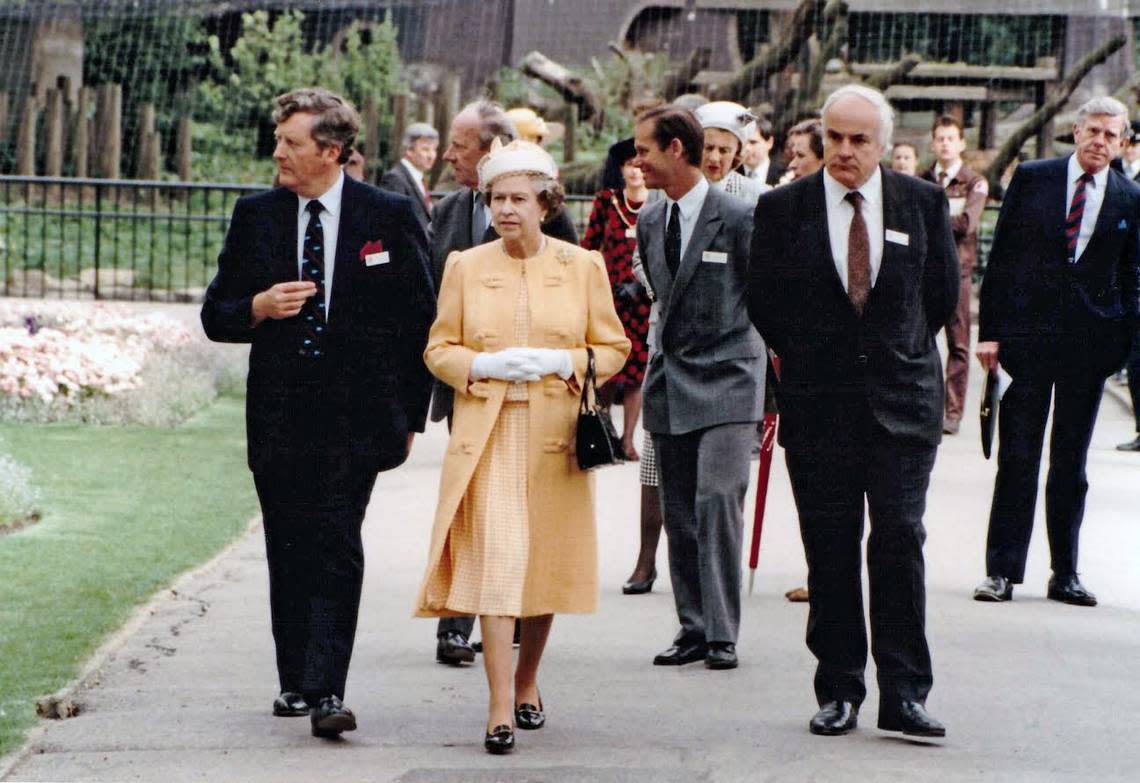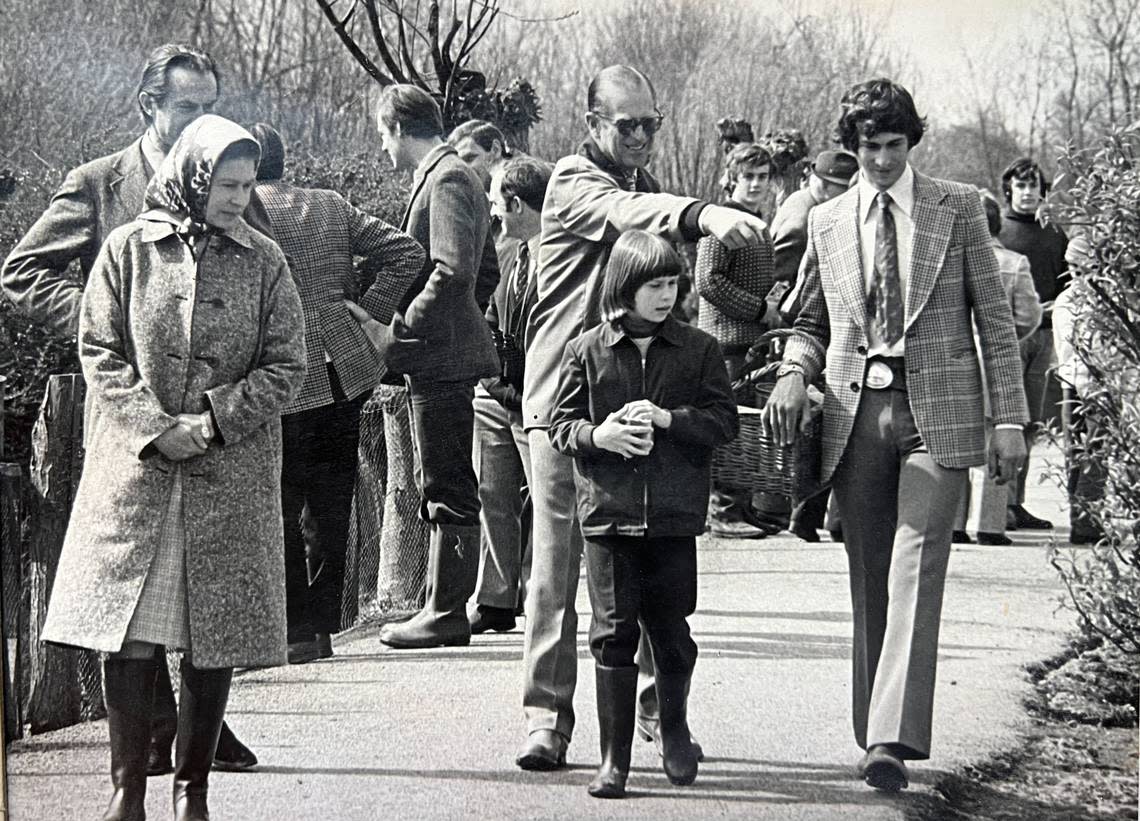Two NC residents recall bonding with Queen Elizabeth II over her royal waterfowl
Millions watched the funeral of Queen Elizabeth II on Monday, mourning the loss of a woman they never met.
But two North Carolina residents did meet her, both bonding with the animal-loving monarch over birds.
Mike Lubbock, founder of the Sylvan Heights Bird Park in Halifax County in North Carolina, was a curator for the Wildfowl and Wetlands Trust, a reserve in Slimbridge, England, in the 1970s when he was summoned to Buckingham Palace.
At the time, the queen had acquired four pairs of red-breasted geese from Siberia.
“They were her favorite,” Lubbock recalled in a phone interview from Scotland Neck. “She hoped they would breed.”
But there had been no royal goslings, which was why Lubbock was called in. Now 78, he began working at the Trust when he was 17 and was on his way to becoming one of the world’s most prolific waterfowl aviculturists.

Corgis ‘disturbed the birds’
He was let into the office of the queen’s secretary, he said, who sent him on a tour of the grounds with head gardener Fred Nutbeam to look for anything that might be a barrier to waterfowl romance.
The geese were living on an island, Lubbock said, and he learned that while the queen’s many Corgis did not go onto the island, “They ran around and sort of disturbed the birds.”
Helicopters landed and took off from a site on the lawn not far from the island, Lubbock noticed. He also learned that the four garden parties that attracted about 2,000 people to the palace four times a year were held nearby, one of them during prime mating season for the geese.
And the birds were getting the wrong food.

After the tour, the queen’s secretary told Lubbock, “You have an audience with the queen at 11.”
“I was 30-ish,” Lubbock said. “Terrified. I had never met the queen in such a way before.”
But she put him immediately at ease and asked, “You’ve had a walk around the grounds. What do you think?”
Lubbock told her: They need the right food and they shouldn’t be harassed by dogs, helicopters or garden party guests.
Good news for the queen
The food could be easily changed, the queen said, and she promised to try to control the dogs better and have the helicopters land closer to the palace. But she told Lubbock the garden parties had been going on forever and she wasn’t sure she could do anything about those.
When he got home, Lubbock said, he and his wife received an invitation to the party that was coming up. They went, and Lubbock noticed guests were barred from going around behind the island, allowing the geese a place to retreat.
Two weeks later, he was working at Slimbridge when he was called to the office; Buckingham Palace was on the phone. The queen’s secretary told Lubbock that her majesty would like a word.
“‘Three of the four pairs of red-breasted geese have laid,’” he recalls her saying excitedly. “She was absolutely delighted.
“And so was I.”
Until he moved to the U.S. in 1982, Lubbock said, he visited the palace several times a year. Once, while out walking with the gardener, Lubbock said, the queen rode by on a horse and recognized him. “Mr. Lubbock,” she said. “You’ve come to see the geese.”
‘Very much in awe’
Dr. David Jones, who retired as director of the N.C. Zoo in 2015, first met the queen when he was a boy chorister at St. Paul’s Cathedral in London. He missed by a year joining the choir in time to sing at Queen Elizabeth’s coronation.
But he performed with the choir at the palace several times, and the queen often attended special services at the cathedral where the choir would sing. “I got to meet her many times,” Jones said from his home in Asheboro. “As a boy I was very much in awe.”

He would have many more occasions to meet with the queen and others in the royal family as an adult.
“Fast forward 30 years,” Jones said, to when he was running the London Zoo and chairman of the board of several animal conservation and animal welfare charities of which the queen was a patron. Jones often introduced her majesty as the guest of honor at receptions for those groups, he said.
“And every time we opened a new exhibit at the zoo, usually she and Prince Phillip would do the opening and then walk about and have a reception and all of that,” Jones said. “There were probably three or four of those.”
As senior veterinarian at the London Zoo, one of Jones’s tasks was to be an advisor on the waterfowl collection at Buckingham Palace in the 1970s.
“I remember going one time to consult with the head gardener on how to feed the flamingos,” Jones said, referring to a small flock that lived on one of the lakes at the palace. “They’re very specialized feeders, and I had done quite a bit of work on flamingos.”
The queen and the flamingos
It was a wet day, and as Jones and the gardener were talking, Jones noticed someone approaching, “this figure in a long scarf and rain coat,” the queen.
“She had taken an interest in what are we going to do about the flamingos.”
Jones’ advice must have been spot-on, as the flamingos thrived until a fox slipped onto the property and wiped out the whole flock.
Through his role at the London zoo, Jones also knew Prince Phillip, the queen’s husband, who served on the board of the zoo society and also on an animal welfare group Jones worked with. He met Princess Diana, who took William and Harry to the zoo several times a year when they were young.
Jones said it appeared to him that Queen Elizabeth disliked “all the pageantry, the fuss and bother,” that went with her position. At heart, he said, she seemed genuinely interested in everything and enjoyed asking questions of people who knew more about something than she did.
“She was a remarkable person,” Jones said, “a remarkable leader. These are sad days. But as the Brits would say, she was 96. She had a good innings.”
